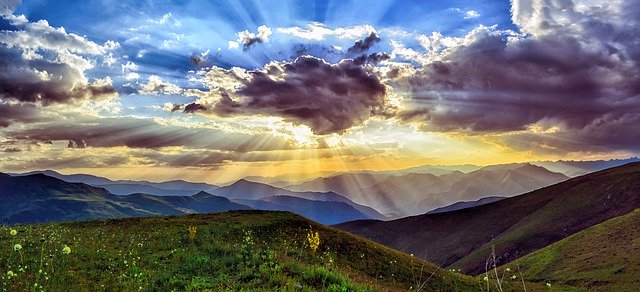The year 2020 has been dominated by the twin terrors of the COVID-19 pandemic and police violence. The first of these is a new natural threat. The second is as old as our nation, produced by the racism baked into our societal structures.
But these issues are more closely related than they appear, and both are the kind of solutions that the environmental justice movement has worked on for decades. As the world adjusts to post-pandemic lifestyles based on a new awareness of highly charged racial issues, environmentalist thinking can help smooth the way.
A Tale of Two Movements
The environmental movement grew out of naturalism. Mourning the loss of the frontier, authors and thinkers like John Muir, who is often called the father of the environmental movement, and Gifford Pinchot called for the preservation of wildlife species and their habitats. In 1970, the first Earth Day protested against pollution. But as most Americans began to see improved air and water quality, the focus returned to conservation.

The environmental justice movement grew out of the civil rights movement. It is the fight against environmental racism — the unfair burden of pollution that occurs as an extension of institutional racism.
In 1978, sociologist Robert Bullard, who is often called the father of the environmental justice movement, discovered that 82% of Houston’s garbage-handling facilities were located in Black neighborhoods. At that time, the population of Houston was only 25% Black. Decades of subsequent research proved people of color at all income levels are exposed to more pollution than low-income white people.
Two Movements, One Issue
In what should have been a unifying moment, climate change emerged as the defining environmental issue with consequences that harm communities of color first and worst and that threaten habitats around the globe.
However, mainstream environmental organizations largely missed the opportunity to form a powerful coalition with environmental justice activists. They focused on curbing greenhouse gases while ignoring the uneven socioeconomic effects of climate change. People of color, even the environmentalists, were left on their own to struggle against racism, which left little energy for climate activism.
COVID Crisis
People of color are hit the hardest by the pandemic. The CDC reported hospitalization rates four times higher than whites among Latinx, and five times higher among Blacks and Indigenous people. This revived old arguments about lifestyle choices and poverty. But the evidence is so strong that the CDC says (emphasis theirs):
Long-standing systemic health and social inequities have put some members of racial and ethnic minority groups at increased risk of getting COVID-19 or experiencing severe illness, regardless of age.”
Environmental Racism
The pandemic is only the latest example of the way that institutional racism creates an environment of connected factors that cause minorities to be unfairly affected by disease and natural disasters. For COVID, as with other health issues, poverty is one factor. But even middle-class people of color are exposed to more pollution than their white counterparts, at levels of exposure that are known to reduce resistance to disease. This was true of Bullard’s studies in the 1970s and is equally true today.
In 2018, EPA published a report confirming “results at national, state, and county scales all indicate that non-Whites tend to be burdened disproportionately to Whites.”
The connection has long been established between African-Americans’ elevated pollution burden and higher rates of asthma and other respiratory ailments, which now includes coronavirus. There is also a connection between race and food deserts, which are associated with higher rates of obesity, diabetes, and other chronic health problems, all of which put people at higher risk of infection.
Polar Bears and People
The current crises provide environmentalists with another chance to connect the dots between climate change and environmental justice. It is not a question of polar bears versus people. We must begin to build new, just, and sustainable communities that distribute the burden of environmental responsibility fairly.
All communities must be equally empowered to fight back against polluters before industries will be forced to become greener. In order to stop climate change, we have to tackle the racist structures that value some lives more than others. You can’t cut carbon emissions when you can’t breathe.
Environmental Justice
Shopping for safer products reduces your own exposure to chemicals, but may not do much to achieve environmental justice.
Learn from and get involved with organizations like the NAACP’s Environmental and Climate Justice Team; the Environmental Justice Health Alliance, that works to prevent chemical disasters and protect clean drinking water; the Deep South Center for Environmental Justice that partners with communities harmed by racially disproportionate pollution burdens and attendant climate vulnerabilities; or Sunrise Movement, an intersectional youth group supporting the Green New Deal.
You can also contact your congressional representatives to support the Environmental Justice for All Act proposed by Virginia Representative Donald McEachin.
The post Where Does Environmental Justice Fit? appeared first on Earth 911.








